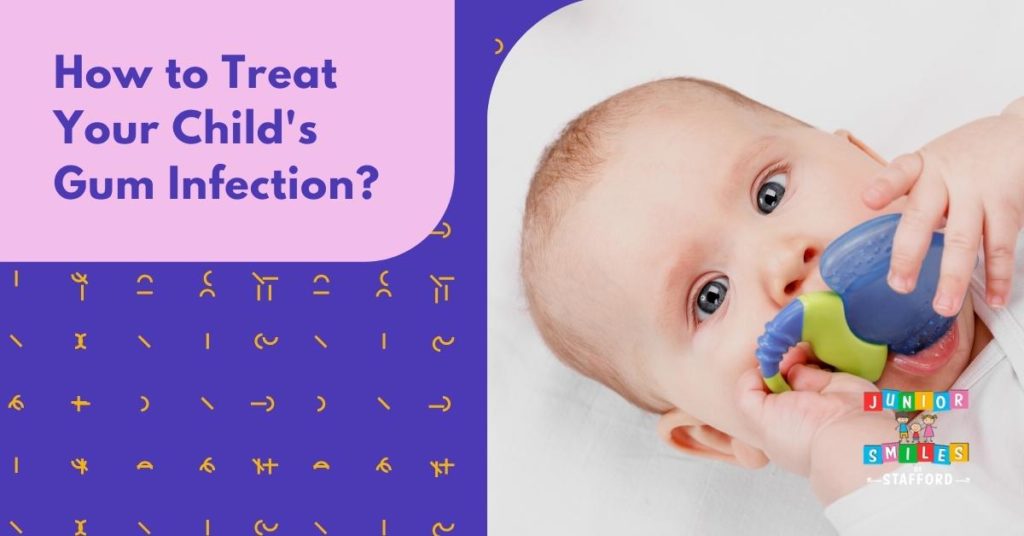How to Treat Your Child’s Gum Infection

As parents, the health and wellbeing of our children is always a top priority. When it comes to dental health, it’s not just about the teeth. Gums play a crucial role too, and a gum infection can be a source of significant discomfort for your child. Gum infections, while common, can be a cause for concern if not addressed promptly. This is why understanding how to effectively treat and prevent gum infections is vital for every parent.
In this comprehensive guide, we’ll explore the causes of gum infections in children, how to identify the signs, and most importantly, the best practices for treatment and prevention.
Periodontal Disease in Children
Periodontal disease, commonly known as gum disease, is an infection of the tissues that hold the teeth in place. In children, it often begins as a mild inflammation of the gums called gingivitis and can progress if not properly treated.
The primary cause of periodontal disease in children is plaque buildup, a sticky film of bacteria that forms on teeth. Regular brushing and flossing can usually control plaque, but if it accumulates, it can harden into tartar, which is much harder to remove.
Children with braces or those who may not be as diligent with their oral hygiene are particularly at risk. Fortunately, periodontal disease in children is preventable and treatable.
Regular dental check-ups, good oral hygiene practices, and a balanced diet are key to preventing it. It’s important to establish these habits early, as they will set the foundation for your child’s lifelong oral health.
Gum Disease Symptoms
Gum disease can manifest in various ways, and awareness of its symptoms is crucial for early intervention. Here are some common signs of gum disease in children that you should look out for:
- Swollen, Bright Red Gums: It is often one of the first signs of gum disease. If your child’s gums appear unusually red or swollen, it’s time for a dental check-up.
- Bleeding After Flossing: It’s not uncommon for gums to bleed a little when your child is just starting to floss, but if the bleeding is persistent, it could be a sign of gum disease.
- Receding Gums: If you notice that your child’s gums are pulling away from their teeth, making the teeth look longer than normal, this is a classic sign of gum disease progression.
- Persistent Bad Breath: If your child has bad breath that doesn’t go away with brushing or mouthwash, this could be due to the bacteria in gum disease.
- Loose Teeth: In advanced stages, gum disease can weaken the structures holding the teeth, causing them to become loose.
- Pus Between Gums and Teeth: This is a more severe symptom, indicating an advanced stage of infection.
If you notice any of these symptoms in your child, it’s important to schedule a visit to a peditric denstist promptly. Early detection and treatment of gum disease can prevent more serious issues and keep your child’s smile healthy and bright.
Remember, a proactive approach to your child’s oral health can make a significant difference in preventing and managing gum disease.
Causes of Gum Disease in Kids
Understanding the causes of gum disease in children is the first step in preventing it. Here are some common causes that you, as a parent, should be aware of:
Poor Oral Hygiene
The most common cause of gum disease in children is poor oral hygiene. Not brushing or flossing regularly allows plaque to build up on the teeth, leading to gum disease. Teaching your child the importance of regular brushing and flossing is crucial.
Diet High in Sugar
A diet rich in sugary foods and drinks can contribute to the development of gum disease. Bacteria in the mouth feed on sugar, producing acids that can irritate the gums and lead to infection.
Genetic Factors
Sometimes, gum disease may be more prevalent in some families due to genetic predisposition. If gum disease is common in your family, your child may be at a higher risk.
Hormonal Changes
In some cases, hormonal changes, especially during puberty, can make gums more sensitive and susceptible to gum disease.
Gum Infection Treatments
If you suspect your child has a gum infection, it’s essential to see a pediatric dentist as soon as possible. Depending on the severity of the infection, there are several treatment options:
Professional Dental Cleanings
Regular dental check-ups and cleanings are vital. During these visits, plaque and tartar are removed from above and below the gum line, helping to prevent and treat gum disease.
Scaling and Root Planing
This non-surgical procedure involves removing plaque and tartar from above and below the gum line and smoothing rough spots on the tooth roots. It’s typically done under local anesthesia and effectively treats gum disease.
Antibiotic Treatments
Antibiotics can be prescribed to reduce or temporarily eliminate bacteria associated with gum disease. They can be in the form of tablets, injections, or topical applications, depending on the infection’s severity.
Regular Monitoring and Care
Ongoing care and monitoring by a pediatric dentist are crucial, especially after treatment, to ensure the gum disease doesn’t recur or worsen.
Read More: Gingivitis in Kids: Causes, Treatment and Prevention
Preventing Gum Infection
Preventing gum infection is easier than treating it. Here are some tips to keep your child’s gums healthy:
Brush Twice a Day
Encourage your child to brush their teeth twice a day with fluoride toothpaste. This helps to neutralize harmful bacteria around the gum line.
Floss Regularly
Flossing removes food particles and plaque between teeth, which are areas where a toothbrush can’t reach. This is critical in preventing gum inflammation.
Use Anti-Gingivitis Mouthwash
Including an anti-gingivitis mouthwash in your child’s oral hygiene routine can help eliminate bacteria in plaque, offering an additional layer of protection.
Regular Dental Visits
Professional cleanings by a dentist are necessary to remove tartar buildup and to check for early signs of gum disease. These visits are essential for maintaining your child’s oral health.
Learn More: How to Properly Take Care of Baby Gums
Gum Infection FAQs
Can a baby’s gums get infected when teething?
Yes, a baby’s gums can become infected during teething. It is often due to bacteria entering the mouth through the small wounds created as new teeth break through the gums.
Signs of infection can include redness, swelling, and discomfort. It’s important to maintain good oral hygiene, even for babies, to prevent infections.
How do I know if my child’s gum is infected?
Signs of gum infection in children include swollen, red gums, bleeding during brushing or flossing, bad breath, and sometimes pain or discomfort. If you notice these symptoms, it’s crucial to seek dental advice as soon as possible.
Schedule Your Child’s Dental Check-up Today!
Treating your child’s gum infection effectively involves a combination of good oral hygiene practices at home and seeking timely professional dental care. Remember to encourage regular brushing and flossing, maintain a healthy diet, and monitor any signs of gum issues in your child. It’s essential to consult a pediatric dentist if the infection persists or worsens, as they can provide specialized treatment and guidance.
If you’re looking for expert pediatric dental care, look no further than Junior Smiles of Stafford. Our team of experienced pediatric dentists is dedicated to providing the best dental care for your child in a friendly and comforting environment. We understand the unique needs of children’s dental health and are equipped to address everything from routine check-ups to treating gum infections. Don’t let gum issues affect your child’s smile.
Contact Junior Smiles of Stafford today to schedule an appointment and ensure your child’s oral health is in the best hands. Your child’s smile is our top priority!

